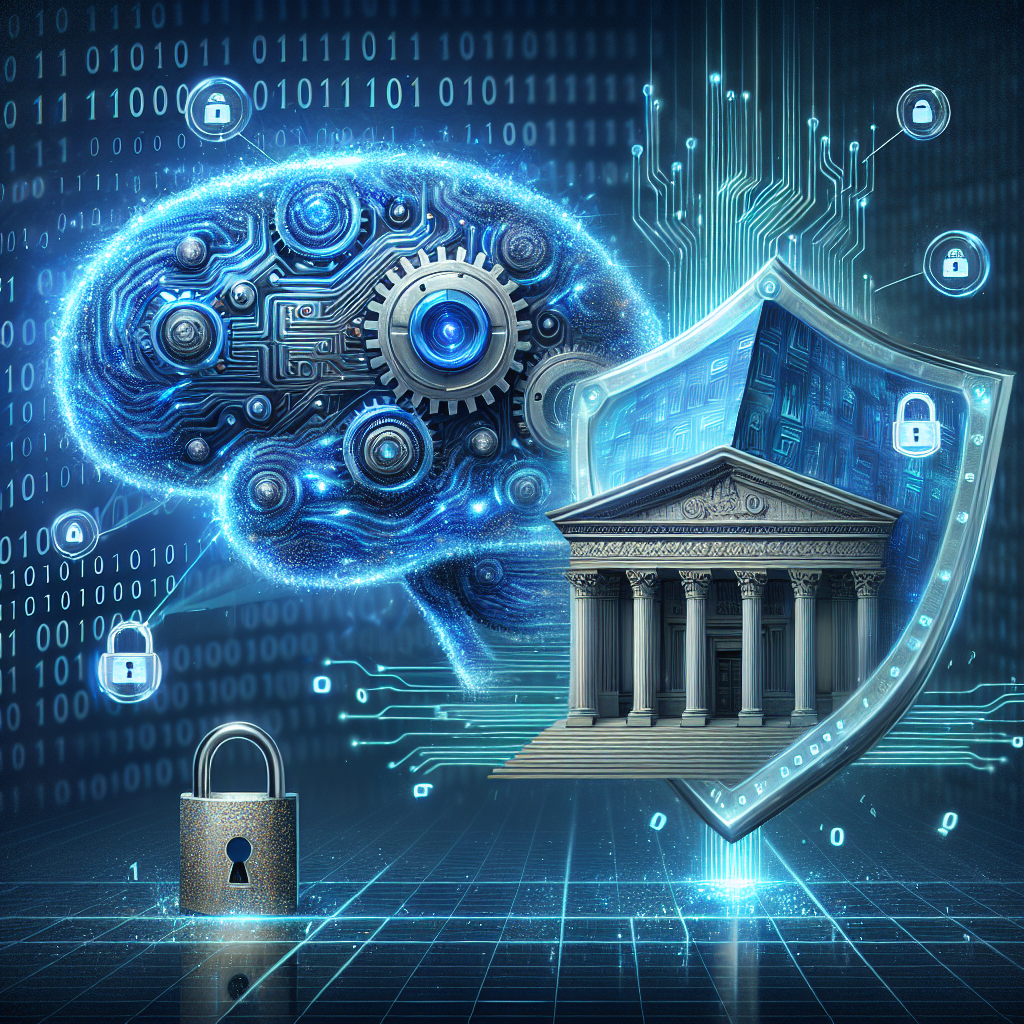In today’s digital age, the banking industry is increasingly reliant on technology to deliver services to customers. While this has made banking more convenient and efficient, it has also exposed banks to new risks, particularly in the form of cyber threats. As banks store and process vast amounts of sensitive information, they have become prime targets for cybercriminals looking to steal valuable data. In response to this growing threat, banks are turning to artificial intelligence (AI) to bolster their cybersecurity defenses.
AI has the potential to revolutionize cybersecurity in the banking sector by enabling banks to detect and respond to threats in real-time, at a scale and speed that would be impossible for human analysts alone. AI-powered tools can analyze vast amounts of data to identify patterns and anomalies that may indicate a cyber attack. They can also automate routine tasks such as monitoring network traffic and applying security patches, freeing up human analysts to focus on more complex threats.
One of the key advantages of AI in cybersecurity is its ability to adapt and learn from new threats. Traditional cybersecurity tools rely on predefined rules and signatures to detect malware and other malicious activity. However, cybercriminals are constantly evolving their tactics to evade detection, making it difficult for these tools to keep up. AI, on the other hand, can learn from past attacks and continuously update its algorithms to stay ahead of emerging threats.
AI can also help banks improve their incident response capabilities. In the event of a data breach, AI-powered tools can quickly identify the source of the breach, contain the damage, and prevent further attacks. This can help banks minimize the financial and reputational damage caused by a cyber attack.
Despite its benefits, AI is not a silver bullet for cybersecurity. Like any technology, AI has its limitations and challenges. For example, AI-powered tools may be vulnerable to adversarial attacks, where cybercriminals trick the AI system into making incorrect decisions. Additionally, AI algorithms may inadvertently reinforce biases present in the data they are trained on, leading to discriminatory outcomes. Banks must be aware of these risks and take steps to mitigate them when implementing AI in their cybersecurity strategy.
To maximize the effectiveness of AI in cybersecurity, banks should adopt a multi-layered approach that combines AI with traditional security measures such as firewalls, antivirus software, and employee training. This layered defense strategy can help banks detect and respond to a wide range of cyber threats, from phishing attacks to ransomware.
In addition to protecting against external threats, banks must also be vigilant against insider threats. Insider threats, where employees or trusted partners misuse their access to sensitive information, pose a significant risk to banks. AI can help banks monitor user behavior and detect anomalies that may indicate insider threats. By analyzing patterns of behavior, AI-powered tools can identify suspicious activities such as unauthorized access to sensitive data or unusual transfer of funds.
As banks increasingly rely on AI for cybersecurity, they must also address the ethical and regulatory implications of using AI in their operations. Banks must ensure that their AI-powered tools comply with data privacy regulations such as the General Data Protection Regulation (GDPR) and do not infringe on customers’ rights. Additionally, banks must be transparent about how they use AI in their cybersecurity practices and communicate clearly with customers about the measures they have in place to protect their data.
Overall, AI has the potential to significantly enhance cybersecurity in the banking sector and protect banks from data breaches. By leveraging AI-powered tools to detect and respond to threats in real-time, banks can strengthen their defenses against cyber attacks and safeguard their customers’ sensitive information. However, banks must also be mindful of the limitations and challenges of AI and take proactive steps to address them in their cybersecurity strategy.
FAQs:
1. How does AI help banks protect against data breaches?
AI helps banks protect against data breaches by analyzing vast amounts of data to identify patterns and anomalies that may indicate a cyber attack. AI-powered tools can detect and respond to threats in real-time, enabling banks to quickly contain the damage and prevent further attacks.
2. What are the limitations of using AI in cybersecurity?
Some limitations of using AI in cybersecurity include vulnerability to adversarial attacks, where cybercriminals trick the AI system into making incorrect decisions, and the potential for AI algorithms to reinforce biases present in the data they are trained on. Banks must be aware of these risks and take steps to mitigate them when implementing AI in their cybersecurity strategy.
3. How can banks address insider threats using AI?
Banks can address insider threats using AI by monitoring user behavior and detecting anomalies that may indicate insider threats. By analyzing patterns of behavior, AI-powered tools can identify suspicious activities such as unauthorized access to sensitive data or unusual transfer of funds.
4. What ethical and regulatory considerations should banks be aware of when using AI in cybersecurity?
Banks must ensure that their AI-powered tools comply with data privacy regulations such as the General Data Protection Regulation (GDPR) and do not infringe on customers’ rights. Additionally, banks must be transparent about how they use AI in their cybersecurity practices and communicate clearly with customers about the measures they have in place to protect their data.

